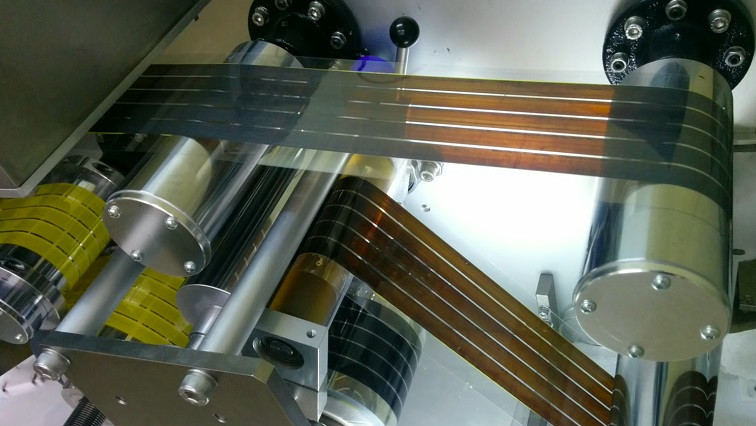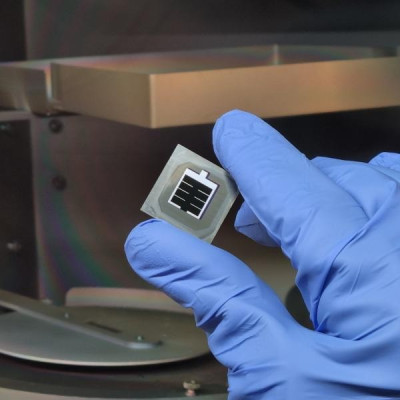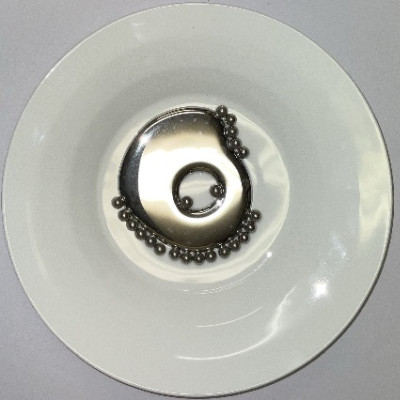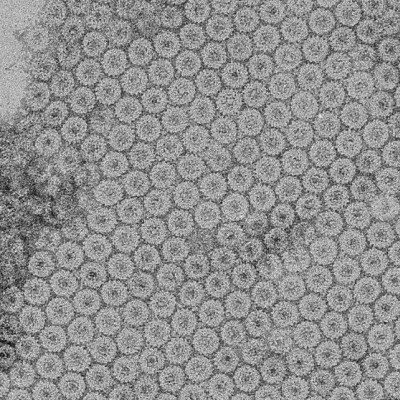Joel Jean PhD ’17 spent two years working on The Future of Solar Energy, a report published by the MIT Energy Initiative (MITEI) in 2015. Today, he is striving to create that future as CEO of Swift Solar, a startup that is developing lightweight solar panels based on perovskite semiconductors.
It hasn’t been a straight path, but Jean says his motivation — one he shares with his five co-founders — is the drive to address climate change. “The whole world is finally starting to see the threat of climate change and that there are many benefits to clean energy. That’s why we see such huge potential for new energy technologies,” he says.
Max Hoerantner, co-founder and Swift Solar’s vice president of engineering, agrees. “It’s highly motivating to have the opportunity to put a dent into the climate change crisis with the technology that we’ve developed during our PhDs and postdocs.”
The company’s international team of founders — from the Netherlands, Austria, Australia, the United Kingdom, and the United States — has developed a product with the potential to greatly increase the use of solar power: a very lightweight, super-efficient, inexpensive, and scalable solar cell.
Jean and Hoerantner also have experience building a solar research team, gained working at GridEdge Solar, an interdisciplinary MIT research program that works toward scalable solar and is funded by the Tata Trusts and run out of MITEI’s Tata Center for Technology and Design.
“The inventions and technical advancements of Swift Solar have the opportunity to revolutionize the format of solar photovoltaic technology,” says Vladimir Bulović, the Fariborz Maseeh (1990) Professor of Emerging Technology in MIT’s Department of Electrical Engineering and Computer Science, director of MIT.nano, and a science advisor for Swift Solar.
Tandem photovoltaics
The product begins with perovskites — a class of materials that are cheap, abundant, and great at absorbing and emitting light, making them good semiconductors for solar energy conversion.
Using perovskites for solar generation took off about 10 years ago because the materials can be much more efficient at converting sunlight to electricity than the crystalline silicon typically used in solar panels today. They are also lightweight and flexible, whereas crystalline silicon is so brittle it needs to be protected by rigid glass, making most solar panels today about as large and heavy as a patio door.
Many researchers and entrepreneurs have rushed to capitalize on those advantages, but Swift Solar has two core technologies that its founders see as their competitive edge. First, they are using two layers of perovskites in tandem to boost efficiency. “We’re putting two perovskite solar cells stacked on top of each other, each absorbing different parts of the spectrum,” Hoerantner says. Second, Swift Solar employs a proprietary scalable deposition process to create its perovskite films, which drives down manufacturing costs.
“We’re the only company focusing on high-efficiency all-perovskite tandems. They’re hard to make, but we believe that’s where the market is ultimately going to go,” Jean says.
“Our technologies enable much cheaper and more ubiquitous solar power through cheaper production, reduced installation costs, and more power per unit area,” says Sam Stranks, co-founder and lead scientific advisor for Swift Solar as well as an assistant professor in the Department of Chemical Engineering and Biotechnology at the University of Cambridge in the United Kingdom. “Other commercial solar photovoltaic technologies can do one or the other [providing either high power or light weight and flexibility], but not both.”
Bulović says technology isn’t the only reason he expects the company to make a positive impact on the energy sector. “The success of a startup is initiated by the quality of the first technical ideas, but is sustained by the quality of the team that builds and grows the technology,” he says. “Swift Solar’s team is extraordinary.”
Indeed, Swift Solar’s six co-founders together have six PhDs, four Forbes 30 Under 30 fellowships, and more than 80,000 citations. Four of them — Tomas Leijtens, Giles Eperon, Hoerantner, and Stranks — earned their doctorates at Oxford University in the United Kingdom, working with one of the pioneers of perovskite photovoltaics, Professor Henry Snaith. Stranks then came to MIT to work with Bulović, who is also widely recognized as a leader in next-generation photovoltaics and an experienced entrepreneur. (Bulović is a co-inventor of some of the patents the business is licensing from MIT.)
Stranks met Jean at MIT, where Hoerantner later completed a postdoc working at GridEdge Solar. And the sixth co-founder, Kevin Bush, completed his PhD at Stanford University, where Leijtens did a postdoc with Professor Michael McGehee, another leading perovskite researcher and advisor to Swift. What ultimately drew them all together was the desire to address climate change.
“We were all independently thinking about how we could have an impact on climate change using solar technology, and a startup seemed like the only real direction that could have an impact at the scale the climate demands,” Jean says. The team first met in a Google Hangouts session spanning three time zones in early 2016. Swift Solar was officially launched in November 2017.
MITEI study
Interestingly, Jean says it was his work on The Future of Solar Energy — rather than his work in the lab — that most contributed to his role in the founding of Swift Solar. The study team of more than 30 experts, including Jean and Bulović, investigated the potential for expanding solar generating capacity to the multi-terawatt scale by mid-century. They determined that the main goal of U.S. solar policy should be to build the foundation for a massive scale-up of solar generation over the next few decades.
“I worked on quantum dot and organic solar cells for most of my PhD, but I also spent a lot of time looking at energy policy and economics, talking to entrepreneurs, and thinking about what it would take to succeed in tomorrow’s solar market. That made me less wedded to a single technology,” Jean says.
Jean’s work on the study led to a much cited publication, “Pathways for Solar Photovoltaics” in Energy & Environmental Science (2015), and to his founding leadership role with GridEdge Solar. “Technical advancements and insights gained in this program helped launch Swift Solar as a hub for novel lightweight solar technology,” Bulović says.
Swift Solar has also benefited from MIT’s entrepreneurial ecosystem, Jean says, noting that he took 15.366 (MIT Energy Ventures), a class on founding startups, and got assistance from the Venture Mentoring Service. “There were a lot of experiences like that that have really informed where we’re going as a company,” he says.
Stranks adds, “MIT provided a thriving environment for exploring commercialization ideas in parallel to our tech development. Very few places could combine both so dynamically.”
Swift Solar raised its first seed round of funding in 2018 and moved to the Bay Area of California last summer after incubating for a year at the U.S. Department of Energy’s National Renewable Energy Laboratory in Golden, Colorado. The team is now working to develop its manufacturing processes so that it can scale its technology up from the lab to the marketplace.
The founders say their first goal is to develop specialized high-performance products for applications that require high efficiency and light weight, such as unmanned aerial vehicles and other mobile applications. “Wherever there is a need for solar energy and lightweight panels that can be deployed in a flexible way, our products will find a good use,” Hoerantner says.
Scaling up will take time, but team members say the high stakes associated with climate change make all the effort worthwhile.
“My vision is that we will be able to grow quickly and efficiently to realize our first products within the next two years, and to supply panels for rooftop and utility-scale solar applications in the longer term, helping the world rapidly transform to an electrified, low-carbon future,” Stranks says.
Read the original article on MIT News.







